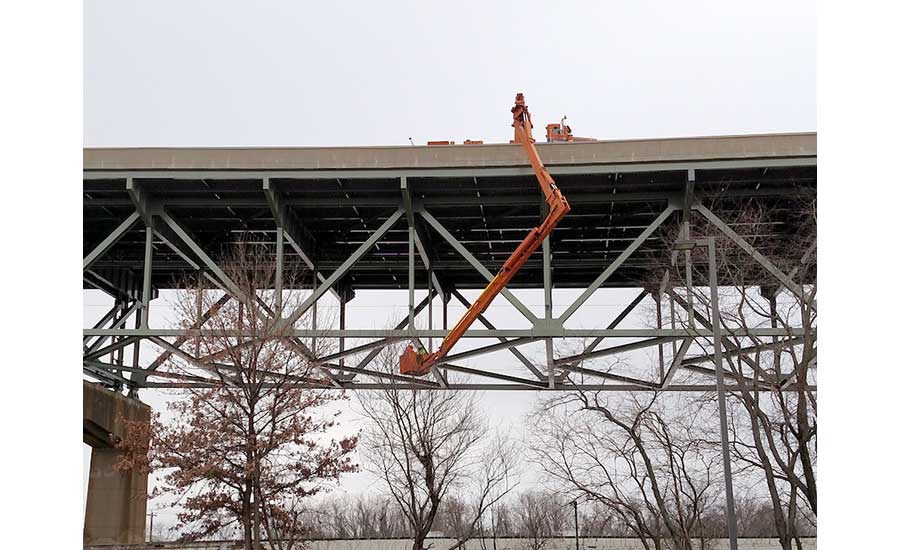The Delaware River Bridge will remain closed to traffic for at least eight more weeks while crews construct a permanent splice to reconnect a large vertical fracture in the 61-year-old symmetrical truss bridge.
The 1.25-mile bridge connecting the Pennsylvania and New Jersey turnpikes on Interstate 276 was closed on Jan. 20 when the crack was discovered during a painting operation. An operation to install eight temporary steel plates to stabilize the fracture was completed two days after the bridge was closed.
PA Turnpike Chairman Sean Logan said in the statement, “this is an emergency situation; we’re working around the clock to resolve it. It would be reckless to put a single vehicle back onto this structure before we trust its stability.”
The “estimated timeline” for the permanent repair was announced late Friday afternoon by an emergency engineering task force—which includes two dozen public and private engineering design, construction and transportation entities. The task force said April would be the soonest the bridge could be reopened without partially reconstructing or replacing the cracked member.
While the task force considered several “repair scenarios” Pennsylvania Turnpike Commission chief engineer Brad Heigel said in a statement that “Right now, the best-case scenario entails repairing the I-beam by constructing a permanent splice to reconnect the fractured section. But before that can occur, crews must first realign the bisected segment by deploying eight temporary towers and hydraulic jacks to return the span to its original position.”
The instrumentation and structural reinforcement required for jacking will be installed the week of Feb. 13, according to the timetable. The jacking itself will occur the week of March 6 and the permanent repair splice is slated to be installed the week of March 13. Load testing will be done the week of March 20. If all that falls into place, the jacking towers could be demobilized as early as the week of March 27.
The fracture caused a section of the bridge between the two supporting piers to drop by about two inches, Heigel said. After the fracture occurred, the load carried by the cracked member was transferred to adjoining structural components that aren’t designed to carry heavier loads.
“The goal of the jacking operation is to return the bridge to its original position and allow us to complete a permanent splice of the fracture,” Heigel said. “As the jacking operation occurs and load is transferred within the bridge, instrumentation will monitor the actual loads, stresses and displacements which will be compared to estimated outcomes from computer models.
“This monitoring — which involves affixing about 50 sensors to the structure — is the only way we can confirm that the splice is successful before we reopen the bridge.”
Foundation work for the eight, 80-ft-tall jacking towers began last week. Crews drilled piles and grouted underground steel pipe columns.
After collecting data from load testing, the task force will determine if a more comprehensive repair is needed to reopen the bridge.
“If more extensive repairs would be required,” Heigel said, “it is not possible to offer even a rough estimate on the scope or duration of further construction because we simply do not have adequate information to make that projection.”


Post a comment to this article
Report Abusive Comment